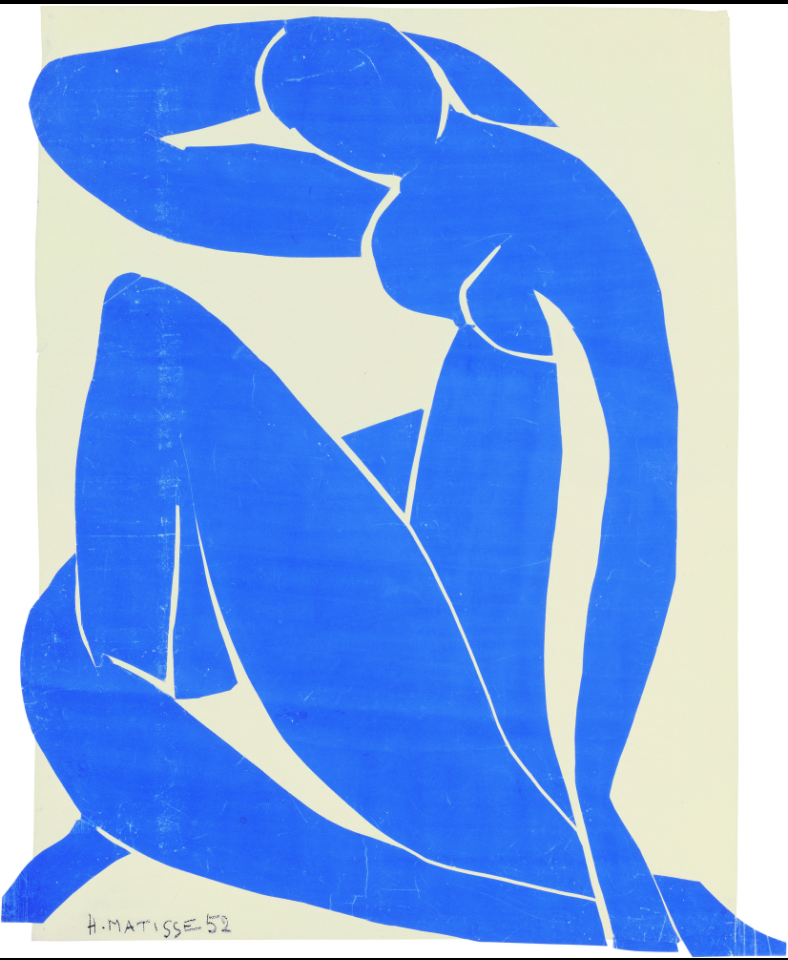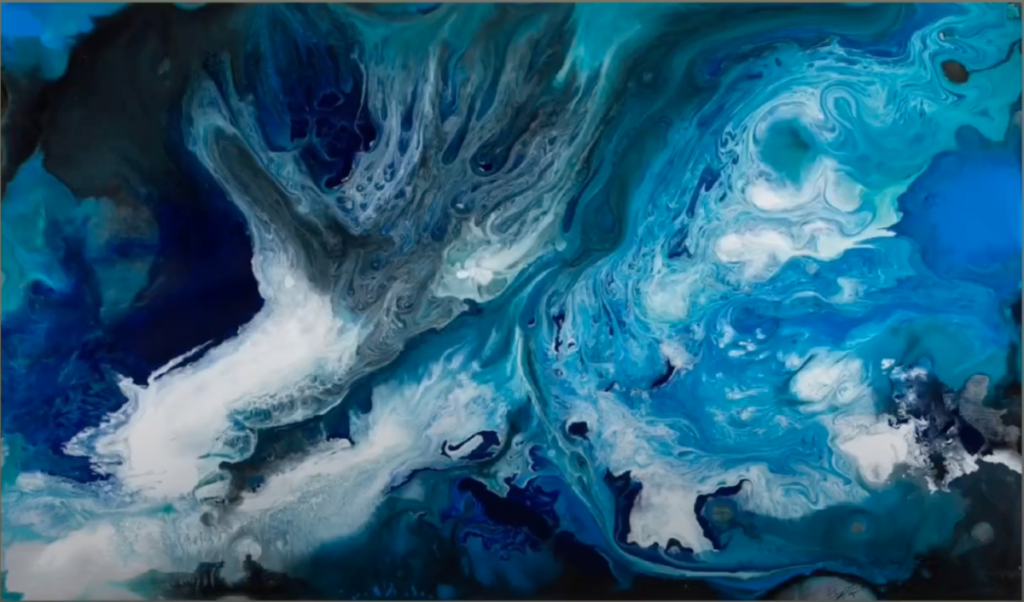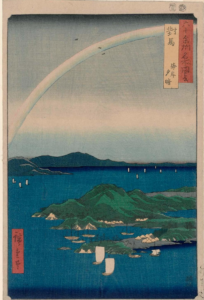I used to draw with oil pastels as a kid and the one color I used heavily was the color blue and as a child, I didn’t know that blue could be interpreted with different meanings both in the emotional spectrum and design spectrum. The “Blue” Exhibit Nassau County Museum of Art intrigued me because of the title “Blue” and intrigued me to see the different interpretations of this color amongst these artists. Most of the Museum belonged to William Cullen Bryant who was an editor of the New York Evening Post, as well as a poet, lawyer, conservationist, political activist, and patron of the arts and it became an intellectual and cultural center.
The first piece of work that I wanted to blog about was “Henri Matisse. Blue Nude II. 1952″. The artist cut shapes out of blue paper and pinned them onto a white canvas to form a womanly figure. Now, this piece wasn’t my favorite but it stood out the most due to how simple it looked. When I say simple I don’t necessarily mean bad or easy to replicate because in my opinion just because a work is easy to replicate doesn’t mean it would have the same story. The reason why it isn’t my favorite is that I’m struggling to understand the challenges in life faced while creating this piece and I don’t understand the process of placing pieces to form a female figure.
The second piece was Cao Jun’s “Poetic Water”, which came from his collection Hymns to Nature. The piece itself was created using the firm roots of Chinese aesthetics and contemporary art. Jun used watercolor for his painting and as his inspiration, he used the lakes and rivers he grew up around in Jiangsu Province, southern China. When I first saw this work, I felt surprisingly calm. The colors and abstract swirls replicate water washing up on the shore and it is such a beautiful piece of art that portrays home for this painter. Oddly enough, I have a phobia of deep water but looking at the piece pushes that away and gives bodies of water a more peaceful and entrancing view.
The third and final piece that caught my eye within this exhibit was Hiroshiges “Fine Evening on the Coast”, an art piece created using woodblock print and ink/color on paper. I was already familiar with one of Hiroshiges work “The Great Wave” which was one the pieces I had learned about in Art History of Graphic Design. The work itself showed used shades of blue to depict one of many beautiful sceneries from Japan.





